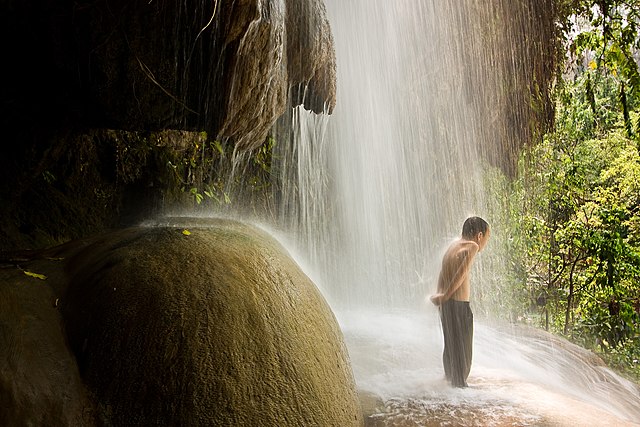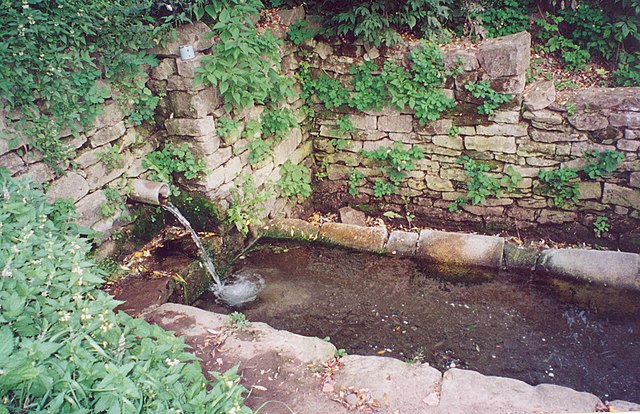Hydrogeology is the area of geology that deals with the distribution and movement of groundwater in the soil and rocks of the Earth's crust. The terms groundwater hydrology, geohydrology, and hydrogeology are often used interchangeably.
Boy drinks from a tap at a NEWAH WASH water project [8] in Puware Shikhar, Udayapur District, Nepal.
Checking wells
Boy under a waterfall in Phu Sang National Park, Thailand.
Demänovská Cave of Liberty, "Emerald Lake"
Groundwater is the water present beneath Earth's surface in rock and soil pore spaces and in the fractures of rock formations. About 30 percent of all readily available freshwater in the world is groundwater. A unit of rock or an unconsolidated deposit is called an aquifer when it can yield a usable quantity of water. The depth at which soil pore spaces or fractures and voids in rock become completely saturated with water is called the water table. Groundwater is recharged from the surface; it may discharge from the surface naturally at springs and seeps, and can form oases or wetlands. Groundwater is also often withdrawn for agricultural, municipal, and industrial use by constructing and operating extraction wells. The study of the distribution and movement of groundwater is hydrogeology, also called groundwater hydrology.
Dzherelo, a common source of drinking water in a Ukrainian village
The entire surface water flow of the Alapaha River near Jennings, Florida, going into a sinkhole leading to the Floridan Aquifer groundwater
Groundwater may be extracted through a water well
Center-pivot irrigated fields in Kansas covering hundreds of square miles watered by the Ogallala Aquifer

![Boy drinks from a tap at a NEWAH WASH water project [8] in Puware Shikhar, Udayapur District, Nepal.](https://upload.wikimedia.org/wikipedia/commons/thumb/8/8f/Boy_drinks_from_a_tap_at_a_NEWAH_WASH_water_project_in_Puware_Shikhar%2C_Udayapur_District%2C_Nepal._%2810677903803%29.jpg/640px-Boy_drinks_from_a_tap_at_a_NEWAH_WASH_water_project_in_Puware_Shikhar%2C_Udayapur_District%2C_Nepal._%2810677903803%29.jpg)






